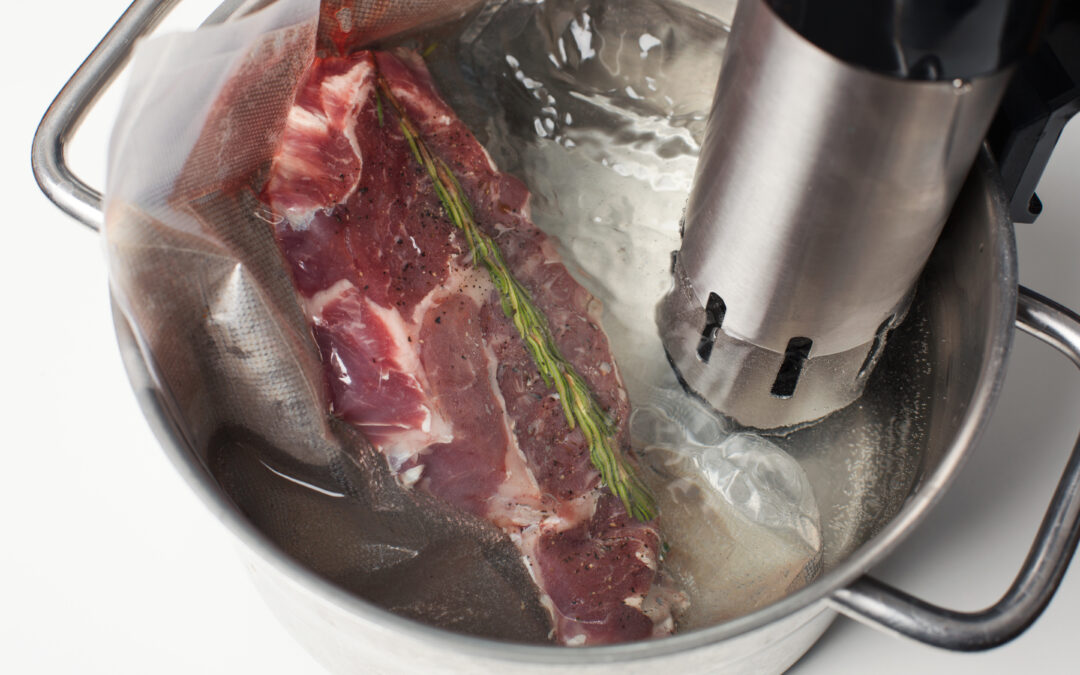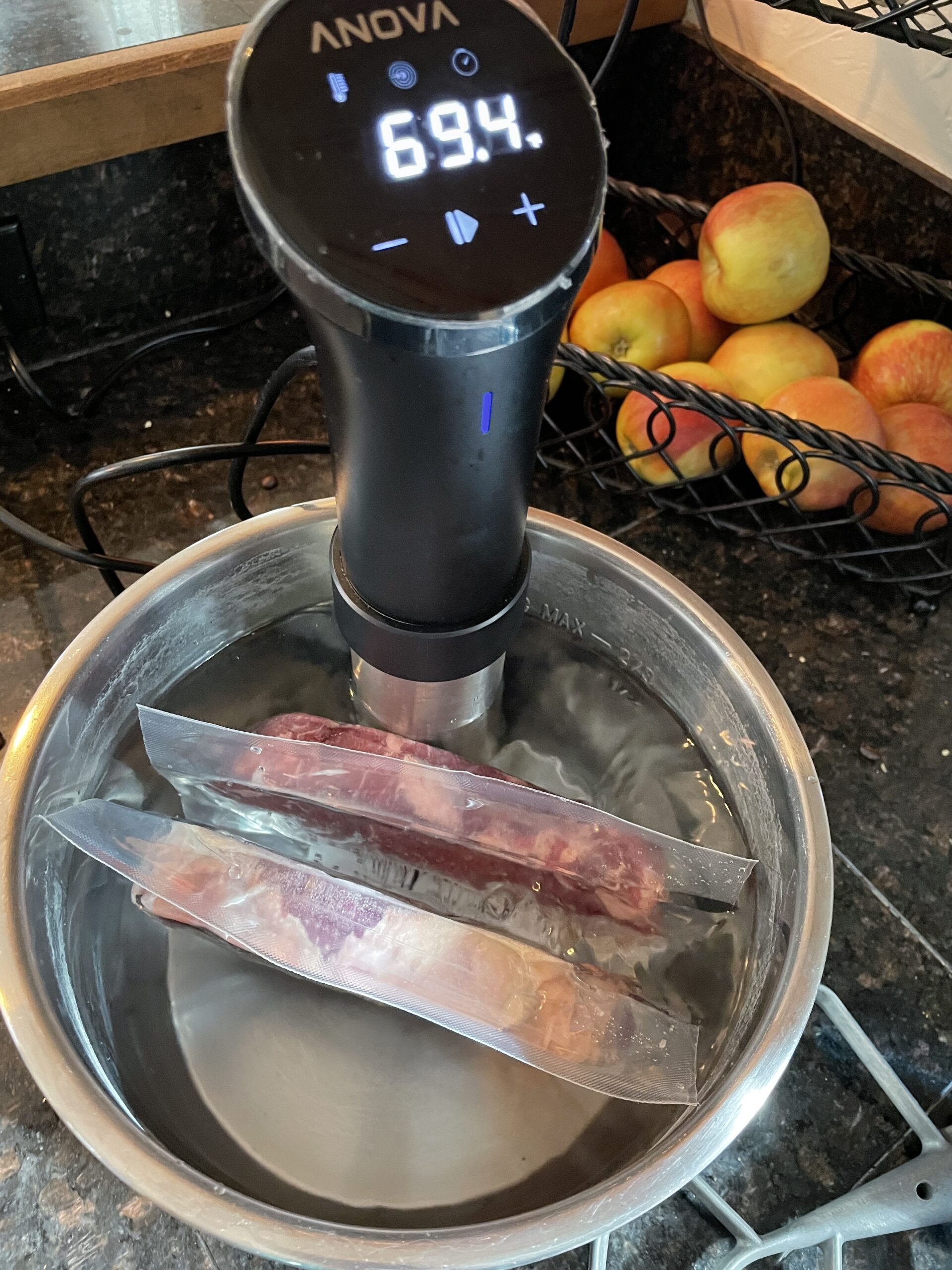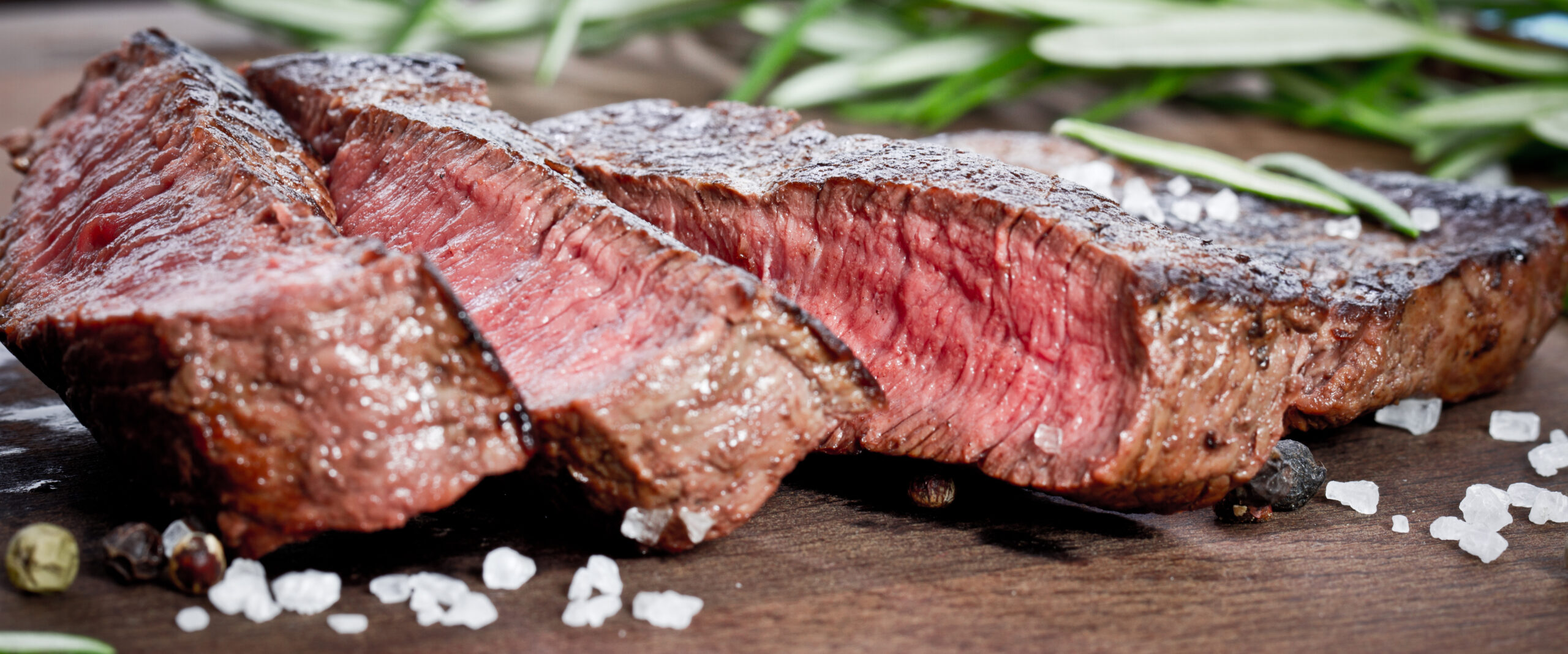
Do your steaks turn out perfect each time? Are your grassfed roasts melt-in-your mouth tender? Chicken always cooked through but never dry? If you’re looking for an easy way to cook meat, even typically tough cuts, to tender perfection then sous vide cooking is for you! Sous vide cooking is a game-changer.
As much as I love my Instant Pot, my new favorite kitchen appliance, the sous vide, is a little more slender, works seamlessly with my outdoor grill, and cooks any meat- whether it’s chicken breast, beef roast, salmon, or steak to perfection. Oh, it’s also ‘set it and ignore it’ and easily adjustable to your preference.
Read: Instant Pot Basics
Read: Outdoor Propane Grilling for Any Meal (an introduction)
What is a sous vide?
Sous vide means ‘under vacuum’ but I think it more as cooking perfectly using circulating water.
What is a sous vide? It’s a stick water heater/circulator that looks similar to an immersion blender. It heats water quickly and evenly to a specific temperature. Meat that is in a silicone or food-grade plastic bag is then put in the perfect temperature water and cooked slowly to be evenly cooked, tender, and delicious!
Stasher Bags are high-quality silicone bags recommended by Anova (and me!).
Connective tissue, muscle meat, and fat is all cooked perfectly with the sous vide, which means that your tougher cuts like sirloin end up even more tender than your typical ribeye.
I love the Anova Nano Cooker available here.
How to Use the Sous Vide Cooker
Prep
- Seal your meat so it is waterproof, whether that’s keeping it in the package it came in like I did for my ButcherBox steaks above, sealing it in a seal-a-meal package, using Ziplock or silicone bags.
- Remove as much air from the package as you can before sealing. This doesn’t have to be perfect, but you do want to remove enough that your entire piece of meat, whether it’s a steak, roast, or some other cut, is completely under water.
- Fill a vessel big enough for all your meat with hot tap water, 3/4 full. This water won’t be touching your meat, so it doesn’t need to be filtered. You want the water to completely cover your meat packages and for there to be enough room for water to circulate around each package, if you are cooking more than one thing at a time. During longer cooking times some water will evaporate so it can be helpful to use a large container to account for this. You can also add more water as needed during cooking.
- Place your meat bags into the hot water and secure your Sous Vide cooker to the side of the container.
Cook
- Use the Anova App or suggested cooking times and temperatures below for the meat you have chosen. On the Anova Nano this can be done manually or all done through the app on your phone- I usually don’t download apps like this but in this case, it’s super helpful!
- At the end of the cooking time you can either leave it at the same temperature until you’re ready to eat (even hours later- it won’t over cook!), or you can eat it right away.
- Remove from the package or bag, discard the juices, and pat meat dry. Season with salt, pepper, and any other seasonings if desired.
- The meat is completely safe to eat as-is, or you can finish steaks, chicken, or fish on the grill or in a pan on the stove to get the nice grill marks for color, texture, and flavor.
Roasts can be roasted in the oven after sous vide cooking by placing in a roasting pan, covering, and baking at 300 degrees for 45 minutes, or until the outside is nicely browned.
Commonly used Sous Vide cooking temperatures and times
Sous Vide Chicken
Chicken breast:155°F / 69°C
1 hour (up to 4)
Chicken thigh:165°F / 74°C
4 Hours (up to 8)
Sous Vide Beef or Lamb
Steaks and Chops:
2 Hours (up to 6 hours)
Medium-rare:129°F / 54°C
Medium:140°F / 60°C
Medium-well:145°F / 63°C
Roasts, 3-4 lbs: 135°F / 57°C
24 hours to be fully cooked, max 36 hours.
I usually do 12 hours and then finish for an hour in the oven.
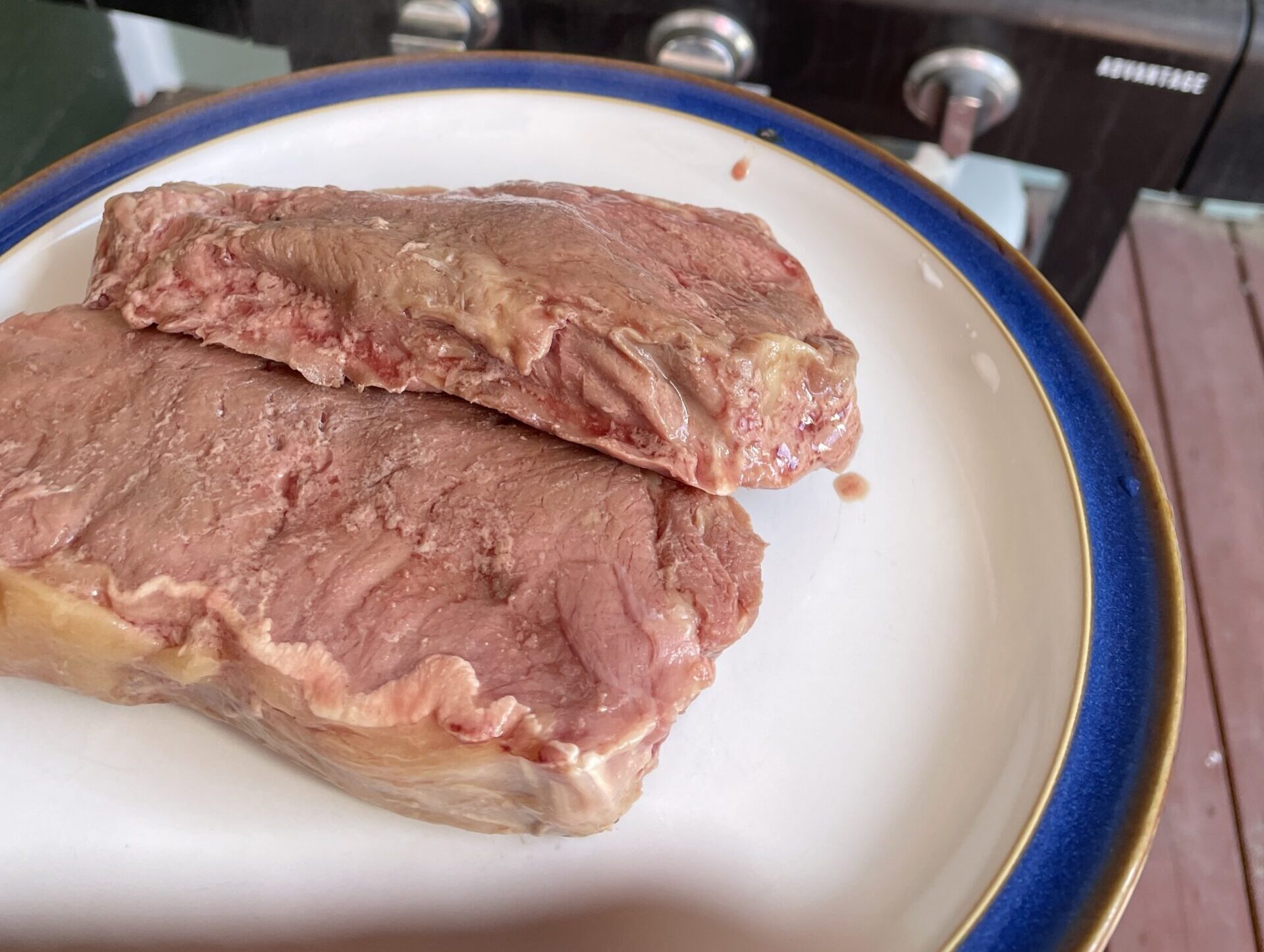
Sous vide ribeye steak after cooking in the water, ready to go on the grill to finish up.
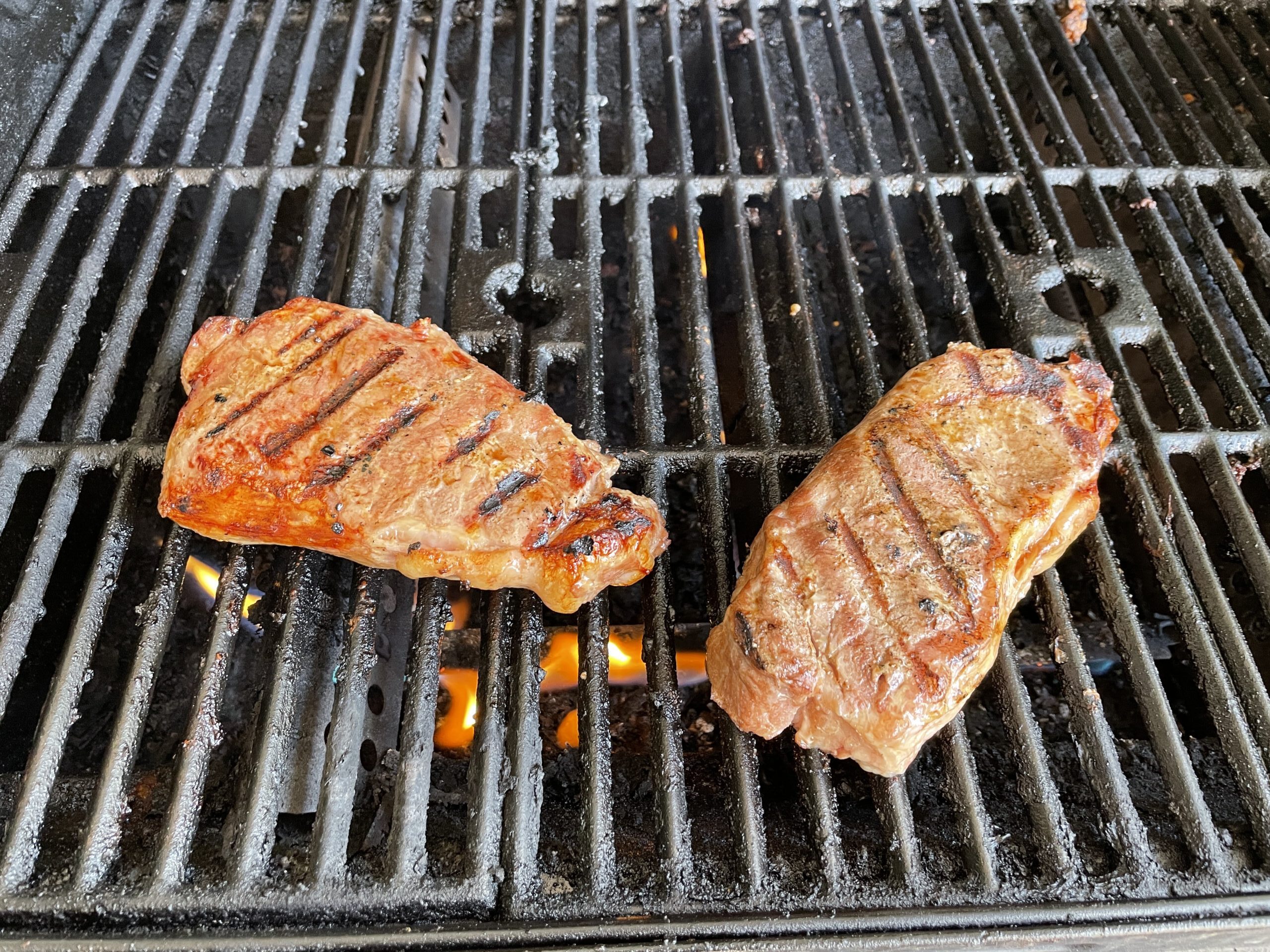
Sous vide ribeye steak after a minute on the very hot grill.
How we use the sous vide in my house:
Frozen Steak
My favorite way to cook steak now is the sous vide! I cook it right in the package from ButcherBox. As I’m wrapping up breakfast, I often take 2 still-frozen steaks out of the freezer and pop them right into a pot filled with hot water. Add the sous vide cooker, and set it to ‘medium rare’ from the app, and ignore them until lunch! Then I season with salt and throw them on the grill for a minute, and we have a nearly instant lunch that is SO good!
My son likes his steak what he calls ‘over done’ so I leave his on the grill a little bit longer.
Read: My Kids Don’t Need Braces Because Of Meat and Butter
Meal Prep
When my bulk meat order comes either from ButcherBox or a local ranch, I make roast packs by adding veggies, seasoning the roasts, and cooking it all with the sous vide. Then I freeze them. We have these all winter long- once a week I pull one package out in the morning, and when it’s thawed enough to remove from the bag, I move it to a casserole dish. Then I bake at 300 degrees for an hour, allow to rest for an hour, and it is nicely browned and amazingly tender.
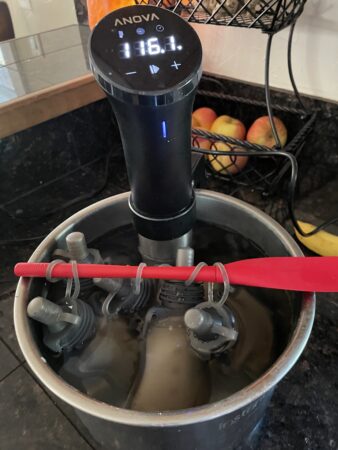
Yogurt
The baby loves pouches, and I love her to have plain high-fat yogurt. I make my yogurt right in reusable silicone pouches in the sous vide now, it works really well! I just add some starter to the bottom, and then warm milk, and cook at 115* for 6 hours, then store in the refrigerator.
This is similar to the yogurt cups I make sometimes. Click here to learn how to make yogurt.
I’ve experimented with sous vide eggs, but haven’t nailed a recipe well enough to share yet. Hopefully soon!
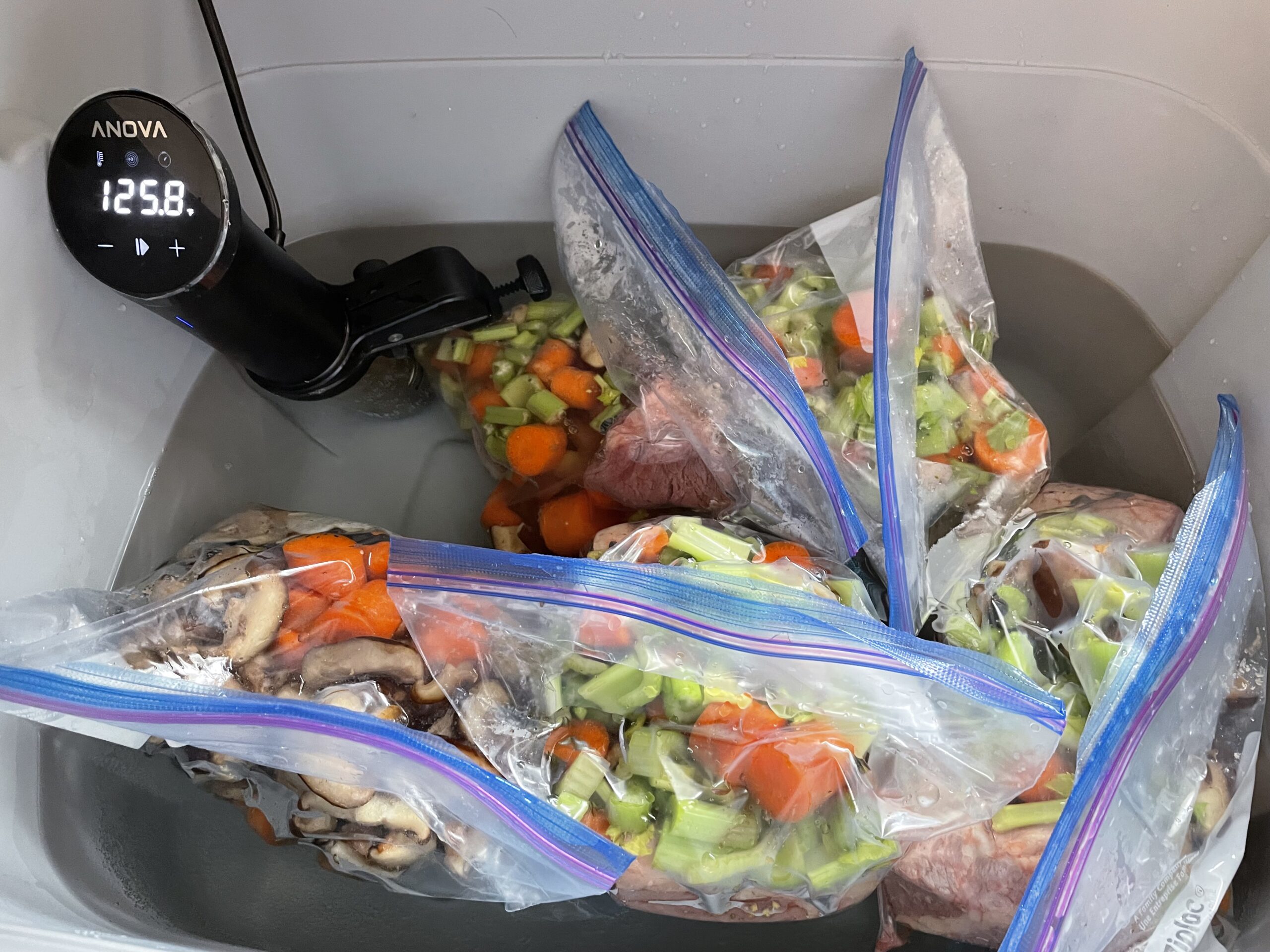
Is all this plastic healthy?
When using plastic you have to weigh the pros and cons. Reusable high-quality silicone bags are a great reusable alternative that are inert and heat resistant.
Stasher Bags are high-quality silicone bags recommended by Anova (and me!).
Personally, I do still use single-use plastic to have one less thing to wash, and when I’m cooking steak from frozen or prepping for the freezer. The plastic tub shown above doesn’t actually touch the meat but any water-tight container can work as your vessel. I often use the inner pot that goes to my Instant Pot for cooking a steak or two.
Most restaurants use sous vide to cook their steak, so if you eat steak while dining out, you’re probably eating meat cooked in plastic also!
If you are highly sensitive, silicone bags are going to be worth the money investment and time to wash. If you really just need some yummy meat on the table easily and consistently, cooking in the package or vacuum sealer bag may be a compromise that you’re willing to make in order to save time or overwhelm.
Learn how to heal leaky gut

60-page ebook of all my best GAPS Diet (Gut and Psychology Syndrome) articles all in one place.

